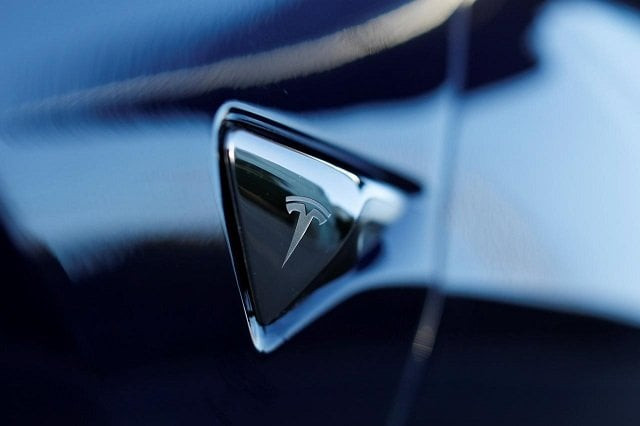Fatal Tesla Autopilot crash driver had hands off wheel
The driver was given two visual alerts and one auditory alert to place his hands on the steering wheel

The logo on a 2018 Tesla Model 3 electric vehicle is shown in Cardiff, California, US, in this picture taken June 1, 2018.
PHOTO:
The NTSB said in a preliminary report the 38-year-old driver, who died in the hospital shortly after the crash, had been given two visual alerts and one auditory alert to place his hands on the steering wheel during the trip.
The report also said the vehicle had sped up from 62 miles (99 km) per hour to nearly 71 miles (114 km) per hour in the three seconds before the March 23 crash - and above the 65 mph (105 km per hour) speed limit. Five days later, the electric car’s high-voltage battery reignited and the fire department had to extinguish the blaze.
Tesla, NTSB clash over Autopilot investigation
Tesla’s Autopilot is a driver assistance system that handles some driving tasks and allows drivers to take their hands off the wheel. Tesla says drivers are supposed to keep their hands on the wheel at all times when using the system.
Tesla declined to comment on the NTSB report but said in March that the driver had not braked or taken actions to avoid the crash in the final seconds before the accident.
The safety board is investigating four Tesla crashes since last year and looking at post-crash fire issues and the use of Autopilot.
The report said the driver in the March incident got warnings to put his hands back on the wheel more than 15 minutes before the crash. In the minute before the accident, his hands were on the wheel for a total 34 seconds, but not in the last six seconds before he struck a crash attenuator and concrete barrier on US Highway 101 in Mountain View, California, the report said.
Bystanders managed to get the driver, Walter Huang, out of the car before it was engulfed in flames, and he was taken to a hospital where he died from his injuries.
Tesla’s owner’s manual warns drivers that the system may not detect stationary objects when traveling at higher speeds.
Last month, police in Utah said a Tesla in Autopilot mode crashed into a parked fire truck. In that incident, the driver of the Model S did not touch the steering wheel in the 80 seconds before the crash.
The price of Musk cutting off analysts? For Tesla, it’s $2 billion
The report raised an issue for Tesla vehicles with Autopilot, as well as other vehicles with adaptive cruise control, said Bryant Walker Smith, an assistant professor at the University of South Carolina School of Law. “Stationary objects are also a challenge for many adaptive cruise control systems and automated emergency braking systems,” he said.
Tesla shares closed down 1 per cent at $316.09 per share in trading on the Nasdaq on Thursday.
In April, the NTSB removed Tesla as a party to its investigation of Huang’s crash after the automaker made public statements. Tesla responded by asserting the NTSB is “more concerned with press headlines than actually promoting safety.”
The NTSB previously faulted Tesla in a 2016 fatal crash in Florida in which Autopilot was engaged, saying “system safeguards were lacking” and “Tesla allowed the driver to use the system outside of the environment for which it was designed and the system gave far too much leeway to the driver to divert his attention.”



















COMMENTS
Comments are moderated and generally will be posted if they are on-topic and not abusive.
For more information, please see our Comments FAQ